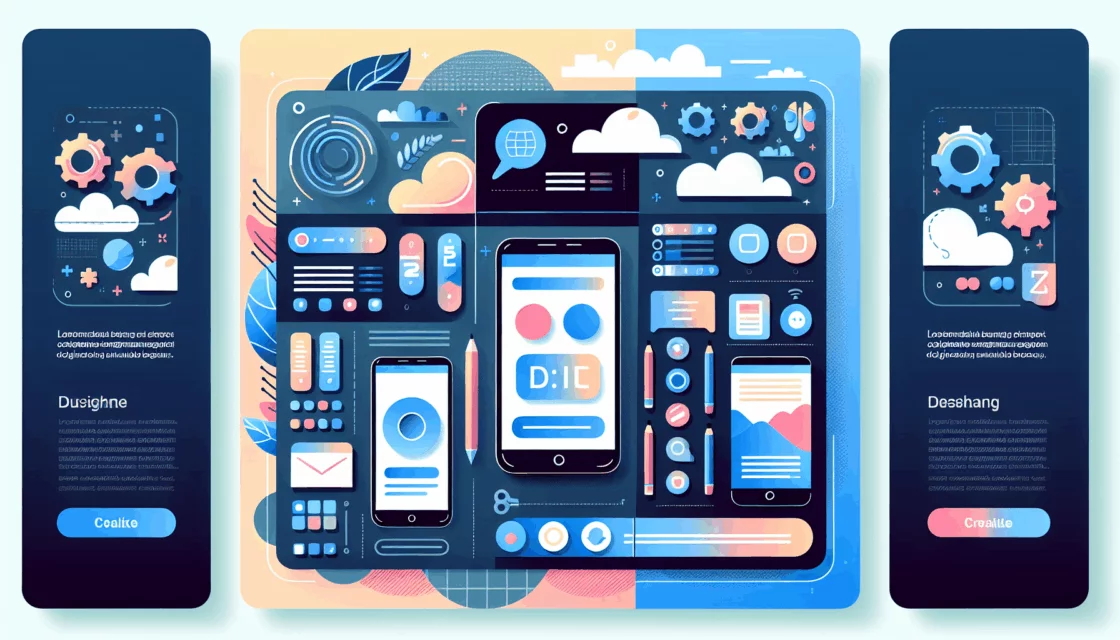
The Power of Microcopy in User Experience
When it comes to designing a user-friendly and engaging digital product, several elements come into play, but one often overlooked yet crucial aspect is microcopy. Microcopy, a term synonymous with UX writing, refers to the small bits of text scattered throughout a website or app that guide users, provide feedback, and enhance the overall user experience.
What is Microcopy and Why is it Important?
Microcopy is more than just filler text; it is a strategic component of UX design. It includes button labels, error messages, tooltips, and any other textual elements that help users navigate and interact with a digital product. As highlighted by Boana Studio, microcopy makes a decisive contribution to digital product design, aiding users in understanding what they need to do and how to do it.
Effective microcopy can significantly impact user engagement, conversion rates, and overall satisfaction. For instance, Google changed the button text from “Book a room” to “Check availability,” which increased user engagement by 17% because it better aligned with the user’s intent at that moment.
Characteristics of Good Microcopy
Good microcopy is characterized by several key traits:
Be Concise
Conciseness is paramount in microcopy. Users scan text rather than read it thoroughly, so keeping it short and to the point is essential. As Built In suggests, every word should have a job, and unnecessary words should be cut out. For example, instead of saying “You must log in before you can write a comment,” simply say “Log in to comment.”
Avoid Long Blocks of Text
Users are not immersed in the UI itself but in their tasks. Therefore, breaking down text into short, scannable blocks helps them quickly understand the information. This approach ensures that the most important text is upfront and easily digestible.
Avoid Jargon and Technical Terms
Clarity and simplicity are key. Avoid using technical jargon that might confuse users. For instance, instead of saying “System error (code #2234): An authentication error has occurred,” say “Sign-in error: You entered an incorrect password.”
Use Present Tense and Active Voice
Writing in the present tense and active voice makes the text more immediate and engaging. For example, “Download” is more effective than “Video will download,” and “Click the Search button to search for an article” is better than “The Search button should be clicked when you are ready to search for an article.”
The Impact of Microcopy on User Engagement
Microcopy can significantly enhance user engagement in several ways:
Increase Engagement
By aligning the microcopy with the user’s intent, you can increase engagement. For example, changing the button text to something more empathetic or relevant can encourage users to take the desired action. Google’s example of changing “Book a room” to “Check availability” is a clear illustration of this.
Boost Conversion Rates
Microcopy can also drive conversion by making the next steps clear and appealing. For instance, changing the button text from “Create My Account” to “Create Account & Get Started” can make users feel they are just one click away from using the product, leading to a 31% increase in conversions.
Reduce Friction and Increase Delight
Good microcopy can make the user interface more usable and delightful. It guides users smoothly through the process, reducing friction and making the experience more enjoyable. This can lead to higher retention rates and better overall user satisfaction.
Real-World Examples and Case Studies
Several companies have seen significant improvements by investing in good microcopy:
- MailChimp: Known for its delightful and engaging interface, MailChimp uses microcopy to make the user experience pleasant and trustworthy. For example, their error messages are designed to be helpful and reassuring rather than confusing or frustrating.
- Google: As mentioned earlier, Google’s change in button text from “Book a room” to “Check availability” increased user engagement. This small change aligned the microcopy with the user’s intent, leading to better outcomes.
How to Implement Effective Microcopy
Implementing effective microcopy involves several steps:
Involve Your Entire Design Team
Good microcopy is not just the responsibility of UX writers; it should be a collaborative effort involving the entire design team. This ensures that the microcopy aligns with the overall design and user experience goals.
Test and Iterate
Testing microcopy is crucial to ensure it meets its intended purpose. Conduct user testing to see how users interact with the microcopy and make necessary adjustments based on feedback.
Keep it Consistent
Consistency in microcopy is key. Ensure that the tone, language, and style of the microcopy are consistent throughout the product to maintain a cohesive user experience.
Conclusion and Next Steps
Microcopy is a powerful tool in enhancing user experience, driving engagement, and boosting conversion rates. By being concise, avoiding jargon, using present tense and active voice, and aligning the text with the user’s intent, you can create microcopy that significantly improves your digital product.
If you’re looking to enhance your website or app’s user experience through effective microcopy, consider reaching out to Belov Digital Agency for expert guidance. Our team specializes in UX writing and can help you craft microcopy that drives results.
For more insights on how to improve your website’s performance, check out our blog post on How to Improve Your Website Performance. And if you have any questions or need further assistance, don’t hesitate to Contact Us.
In addition to good microcopy, ensuring your website is hosted on a reliable platform like Kinsta can also significantly impact your site’s performance and user experience. Investing in the right tools and expertise can make all the difference in creating a seamless and engaging user experience.













